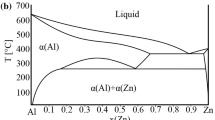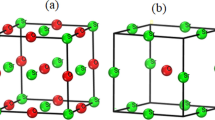Abstract
Local structural heterogeneities in crystals of the binary grossular–spessartine solid solution have been analyzed using powder IR absorption spectroscopy. Wavenumber shifts of the highest energy Si–O stretching mode in spectra collected at room temperature are consistent with variations in Si–O bond length from structural data. They show a smaller positive deviation from linearity across the join than is seen for the grossular–pyrope and grossular–almandine binaries. The effective line widths, Δcorr, of three selected wavenumber regions all deviate positively from linear behaviour. An empirical calibration of this excess spectroscopic property, obtained by comparison with calorimetric enthalpy of mixing data, gives an estimate for the symmetric Margules parameter of WHspec = 14.4(7) kJ mol−1 in ΔHmix = WHspecXGrXSp. WHspec values derived on the same basis for four aluminosilicate garnet solid solutions analyzed by IR spectroscopy vary with ΔV2, where ΔV represents the difference in molar volume between the end members of each binary system. Measurements of lattice parameters and IR spectra were made over a range of temperatures for seven samples with different compositions. Positive excess molar volumes of mixing at low temperature (30 K) may be larger than the excess molar volumes at room temperature. The saturation temperatures of the molar volumes show no correlation with composition, however, in contrast with what had been expected on the basis of data for the grossular–pyrope binary. Saturation temperatures for spectroscopic parameters and lattice parameters of samples with compositions Gr15Sp85 and Gr60Sp40 seem to be outliers in all experiments. It is concluded that the data hint at systematic changes in saturation temperatures across the solid solution, with implications for both the excess entropy of mixing and the excess volume of mixing, but more precise data or further sample characterization are needed to prove that this composition dependence is real in garnet solid solutions.
Similar content being viewed by others
Acknowledgments.
The authors thank A. Bosenick for her help and support, M. Zhang for technical help and E. Salje for his advice. U. Rodehorst acknowledges the award of a Marie Curie Fellowship by the European Community (HPMF-CT-1999–00056) and the work is part of a Ph.D thesis at Westfälische Wilhelms-Universität Münster. C.A. Geiger’s work is supported by DFG grants Ge 8–2/649 and De 412/26–3.
Author information
Authors and Affiliations
Corresponding author
Rights and permissions
About this article
Cite this article
Rodehorst, U., Carpenter, M., Ballaran, T. et al. Local structural heterogeneity, mixing behaviour and saturation effects in the grossular–spessartine solid solution. Phys Chem Minerals 31, 387–404 (2004). https://doi.org/10.1007/s00269-004-0410-2
Received:
Accepted:
Issue Date:
DOI: https://doi.org/10.1007/s00269-004-0410-2




